By Elesa Swirgsdin
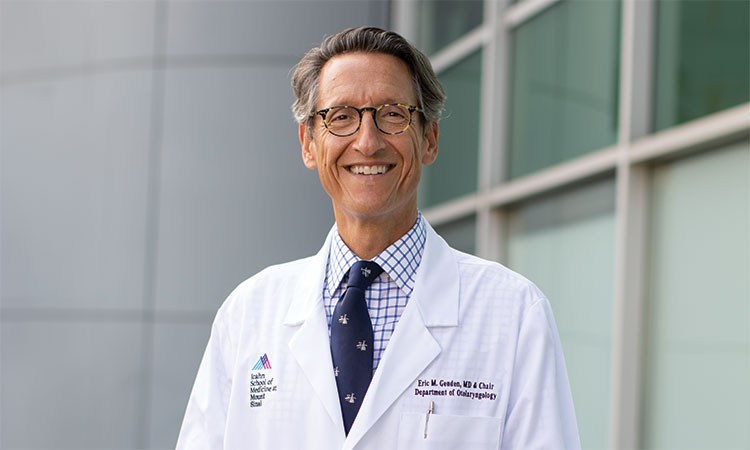
The culmination of 30 years of research, this groundbreaking surgery launched the Mount Sinai Tracheal Transplant Program and opened the door to helping patients worldwide.
For decades, medical researchers believed a successful tracheal implant was physically impossible, which narrowed surgical options for patients with diseased or severely damaged tracheas. For patients with intubation damage, airway tumors, congenital tracheal defects and trauma from accidents, treatments did exist — but those treatments came with a high risk of complications and proved to be only temporary solutions, if they were effective at all.
Eric M. Genden, MD, MHCA, FACS, Isidore Friesner Professor and Chair of Otolaryngology — Head and Neck Surgery and the Director of the Head and Neck Institute at Mount Sinai Health System, refused to accept that patients had no better options. On Jan. 13, Dr. Genden, along with Sander S. Florman, MD, Director of the Recanati/Miller Transplantation Institute at Mount Sinai, and a team of more than 50 specialists, performed the first long-segment donor tracheal transplant at Mount Sinai, laying the foundation for a new era in tracheal treatment and human transplantation.
“Now, we have an option for patients who really didn’t have an option,” Dr. Genden says. “This is an opportunity for life for a lot of patients.”
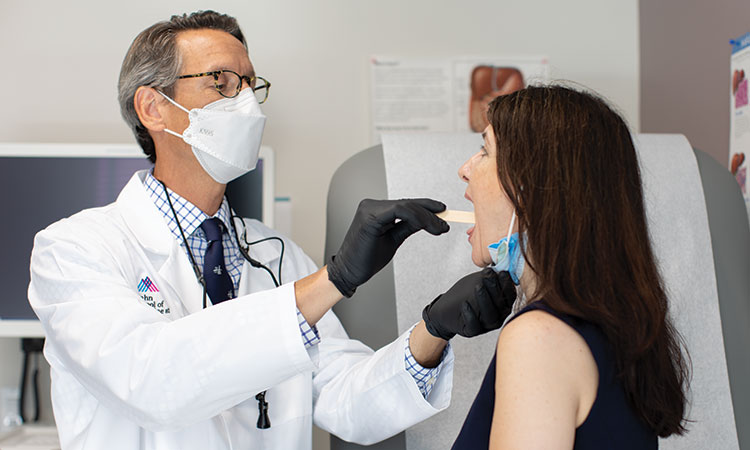
Challenging the Impossible
Dr. Genden’s passion for helping patients with tracheal damage began when he was a medical student at Washington University assisting with a surgery for a benign tracheal tumor.
“We began the operation and saw how extensive the damage was,” Dr. Genden says. “We realized if we removed six or seven centimeters of trachea, there would be no way to put the patient back together. I was kind of shocked.”
The surgeons realized the only thing they could do was place a stent, which would be only a palliative solution. The patient eventually died.
“I was surprised that in an age when we were transplanting kidneys and livers that there was nothing we could do for what seemed at the time was a simple airway passage,” Dr. Genden says. “That was the impetus for my getting involved in this. It was what I felt was an unmet need.”
Dr. Genden decided to dive into existing research on severe tracheal damage, sparking a 30-year journey. He initially found the conclusion of nearly every study on tracheal replacement and reconstruction was the same: tracheal transplantation was not possible, because “it had been considered just an airway tube, when it’s actually a complex organ system, in many ways like a kidney or a liver,” Dr. Genden says. This misunderstanding of the complexity of the organ itself led to the key underlying issue — the belief that revascularization of the trachea was impossible.
“There had been a medical dogma that dates back to the early 1960s, when some very prominent people in the field simply said there is no way to revascularize this organ,” Dr. Genden says. “That belief had been perpetuated throughout the literature for well over a half century.”
Studying literature that dated back to the 1860s, Dr. Genden and his colleagues began to understand the complex nature of the trachea.
“There were drawings by anatomists at the time that demonstrated a rich vascular network that had never been talked about,” he says. “We learned that the inferior thyroid artery runs through the esophagus and into the trachea, and the superior thyroid artery runs through the thyroid gland and into the trachea.”
Eventually, Dr. Genden started his own laboratory research.
“We began to study the trachea,” he says. “We came to understand that the tracheal lining is immunogenic and has very important immunological and immune-processing functions.”
The team started a series of studies to evaluate blood flow, maintaining a piece of the esophagus and a piece of the thyroid. What they discovered would pave the way to revolutionizing tracheal treatments: it was indeed possible to revascularize the entire length of the trachea as well as a good portion of the esophagus.
“That was the beginning of, number one, understanding the immune characteristics of this organ; number two, understanding the organ as it functions; and number three, understanding the true blood flow and the vascularity of the organ,” Dr. Genden says. “Once we had those three things, we were ready to try transplantation.”
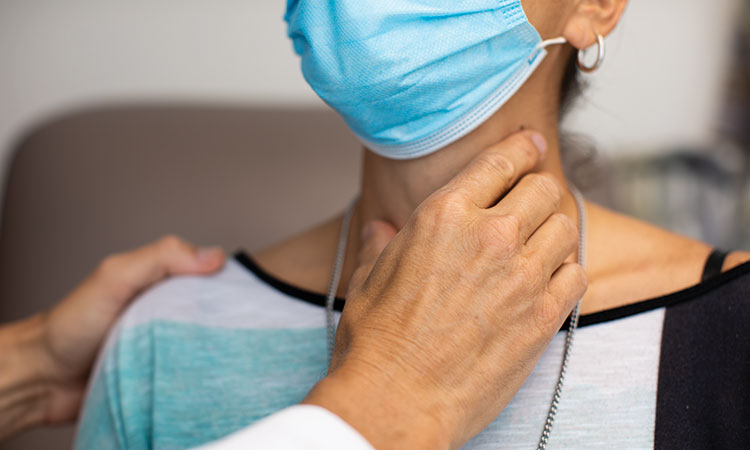
Overcoming Setbacks
By 2005, Dr. Genden was preparing to initiate a human protocol when major advances in stem cell research and organ regeneration came to light that seemed to promise a change in the landscape of medicine.
“Scientists in laboratories were constructing cardiac valves. They were creating ears, cartilage and organs, and sure enough, they were creating tracheas,” Dr. Genden says. “When we saw that … we said, ‘Oh boy, they’ve solved this organ transplant issue. Certainly a trachea is relatively simple. They’re going to be able to create this in a lab, and we don’t really have the justification to do our research or to put someone in immunosuppression.’”
At that point, Dr. Genden made the decision to halt his research and essentially close his laboratory.
But by 2016, the renowned Karolinska Institutet in Sweden had come under fire. A prominent surgeon had been implanting artificial tracheas coated in patients’ own stem cells, which he claimed caused a synthetic windpipe to regenerate and become a living part of the patient’s body. The surgeon was exposed for falsifying research data and committing medical malpractice. Most of the patients who had received trachea implants had died within months of the procedure.
“When we heard about this, we reopened the idea,” Dr. Genden says. “We realized that there actually is a need for tracheal transplantation.”
At first, Dr. Genden and his team faced pushback.
“The biggest challenges we faced were something we all face in medicine — the idea that there’s a dictum about certain things. There are things we believe we can and cannot do. One of those things was the vascular supply to the trachea,” he says, adding that such beliefs can lead to a lack of new research in those areas.
At the time, most people in the medical field considered acclaimed thoracic surgeon Hermes Grillo, MD, to be the father of tracheal surgery. In 2004, Dr. Grillo published Surgery of the Trachea and Bronchi, which was widely accepted as the definitive tome on tracheal surgery. In his textbook, Dr. Grillo wrote about the impossibility of tracheal transplantation.
“It was an area where there wasn’t a lot of argument on who was the authority,” Dr. Genden says, “Challenging that authority didn’t go over very well. It’s not an easy thing to do, and it creates a lot of doubt in your own mind. That’s why ultimately, you stand on your science and hope you’ve done the best work you can do. You don’t eliminate risk, but you limit the risk.”

Support and Teamwork
Eventually, Dr. Genden found the supportive network he needed. With the help of colleagues at Mount Sinai and the Recanati/Miller Transplantation Institute, Dr. Genden moved forward. He approached Dr. Florman and discussed what he wanted to do. Dr. Florman told him that before an in-human surgery could take place, the procedure would first need to be perfected in deceased donors.
“We got permission from families of recently deceased people … for Dr. Genden to go, often at two o’clock in the morning, with our liver transplant team and do procurements, where he refined his skills,” Dr. Florman said in a promotional video released by Mount Sinai. “He did this so he could learn how to take the trachea out with its blood supply, and he did this more than ten times.”
Dr. Genden and Dr. Florman agreed that when the right donor came about, the procurement would take place at Mount Sinai. The process took a great deal of coordination — something few other centers could provide.
“It’s a very unique chemistry and unique situation when you have leadership and a transplant institute that support you, and when colleagues in thoracic surgery, anesthesia, otolaryngology, immunology, pathology and pulmonary medicine all want to take the opportunity,” Dr. Genden says. “There are hundreds of people who stood with and alongside me that made this possible.”
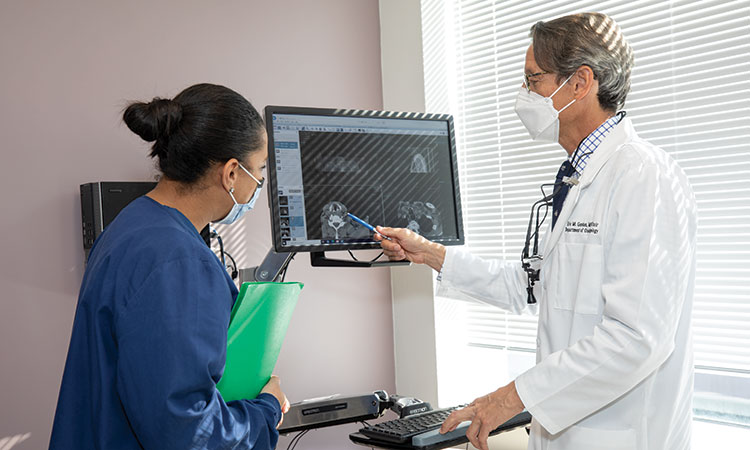
The Right Patient at the Right Time
Before the first tracheal transplant could take place, the team knew that all the necessary elements had to come together at the right time. Dr. Genden’s primary concern was finding the right patient to be the first to undergo the groundbreaking procedure. He wanted the patient to be someone who not only had no other options, but who was also fully informed and aware of the risks involved.
That patient turned out to be 56-year-old Sonia Sein, a social worker from New York. Her trachea had been severely damaged from intubation as a result of an asthma attack. After undergoing six major surgeries to repair the damage and rebuild her windpipe, as well as a dozen minor surgeries, Sein relied on a long-segment tracheostomy to breathe and lived with the constant risk of suffocation.
Sein was on the list of possible transplant recipients for nearly two years, but because she had been functioning relatively well, the team did not want to rush the surgery. By the end of 2020, however, Sein’s condition had rapidly deteriorated.
“She was progressing right down the trachea to a point where she had an extended tracheostomy tube that was just about two centimeters above the carina,” Dr. Genden says. “She couldn’t go out of the house, and she had constant mucus plugging. She couldn’t perform normal daily activities.”
Even though COVID-19 made the situation even more precarious, Dr. Genden knew it was time to act.
“She had become completely debilitated,” he says. “She said, ‘If you don’t try to do something for me, I’m going to take my own life.’”
After learning about Mount Sinai’s transplant program online, Sein had no doubts.
“I told him all I want is five minutes, if that’s all he can give me, five minutes of being able to breathe,” Sein said in a video recorded by Mount Sinai. “It took a lot for me to go into that surgery. I was nervous, I was scared, but I had to think about seeing my granddaughter and being able to breathe.”
Head and Neck Oncology Care in and Around Long Island
Mount Sinai Doctors Manhasset
Patients can now receive care for head and neck cancers at Mount Sinai Doctors Manhasset. Eric M. Genden, MD, MHCA, FACS, Isidore Friesner Professor and Chair of Otolaryngology — Head and Neck Surgery and the Director of the Head and Neck Institute at Mount Sinai Health System, provides diagnostic services and treatment, including consultations, biopsies, scopes, and pre- and postoperative care.
Patients at Mount Sinai Doctors Manhasset can receive first-class care for cancers and other diseases of the:
- Larynx
- Mouth
- Salivary glands
- Sinuses
- Skin/face
- Skull base
- Throat
- Thyroid and parathyroid
- Trachea
Before the team could move forward with the transplant, they had to wait for a donor that met certain criteria: a young person who had never had neck surgery. They also wanted a male donor for a female recipient.
“The basic science work we’d done had demonstrated that the recipient lining grows into the donor graft and eventually replaces it, and we demonstrated that once that happens, you can withdraw immunosuppression, and the graft will persist and survive,” Dr. Genden says. “We wanted to have a male and a female because we can, through the use of cytogenetics, demonstrate with biopsies what percent of the graft segment is his donor tissue and what percent is hers. That’s been an important part of the research.”
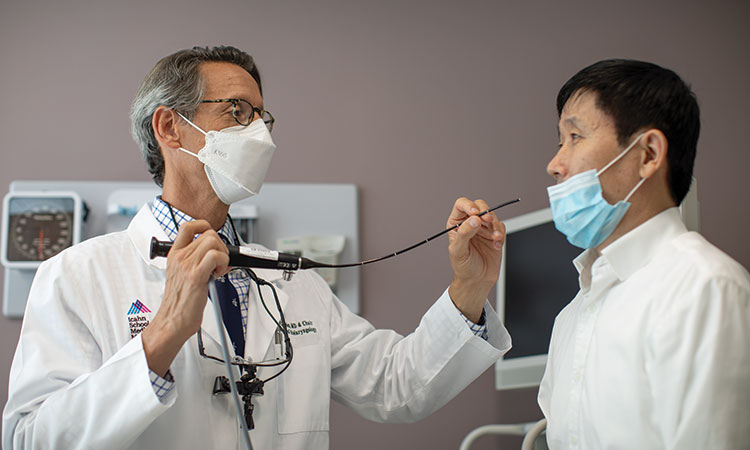
The Moment of Truth
By January, all the pieces finally fell into place. However, even after the potential donor arrived, Dr. Genden and his team needed to ensure they could procure the trachea and all the necessary blood vessels. To do this, they performed a preparation surgery, exposing the trachea, thyroid gland, arteries and blood vessels to determine whether the graft was viable. Seeing that the vessels were well-defined and the length of the trachea was sufficient, they made the decision to move forward and bring Sein into the operating room.
After removing the diseased windpipe and preparing Sein’s blood vessels for microvascular transfer, the surgical team placed the donor graft on ice. While this is a critical time in any transplant surgery, the team felt the pressure more than ever, because the organ being transplanted was without blood supply and they had no way of knowing how well the graft would adapt without it. As quickly as possible, the team put the graft in and revascularized it, connecting the arteries and the vein.
“In 25 to 28 years of practicing head and neck surgery, there was probably nothing more exciting than releasing the blood vessels and watching the graft actually come alive and the entire length of the trachea, all the way down to the lung, bleed, which means it’s alive and it’s well vascularized,” Dr. Genden said in the video.
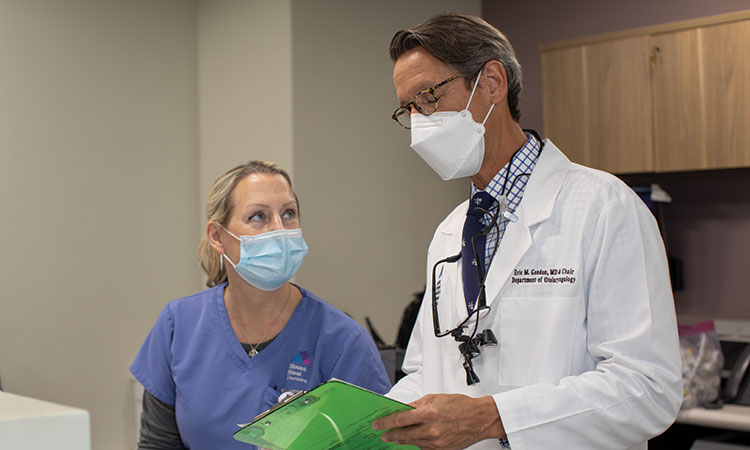
A New Chance for Life
The outcome of the 18-hour surgery was beyond anyone’s greatest expectations.
“If I could have written it to go as well as it could have, I don’t think anyone would have believed it,” Dr. Genden says. “It went very, very smoothly, and I was more surprised than anyone. I was prepared for any number of issues to come up.”
Because organ rejection was a major risk after the surgery, Dr. Genden and Dr. Florman developed a new immunology regimen to give the transplanted trachea the best chance for success. This included treating Sein with triple-therapy immunosuppression after the procedure.
“Her postoperative course and her healing went extremely well,” Dr. Genden says. “I was beyond pleased.”
One thing is certain. The procedure not only saved Sein’s life, but it gave her back the ability to enjoy being alive.
“I’m able to dance with my grandkids for the first time in six years,” Sein told Mount Sinai. “So that’s the best thing this transplant has given me, to be able to do those little things, playing with them and just having a good time. And laughing. I haven’t done that in a long time.”
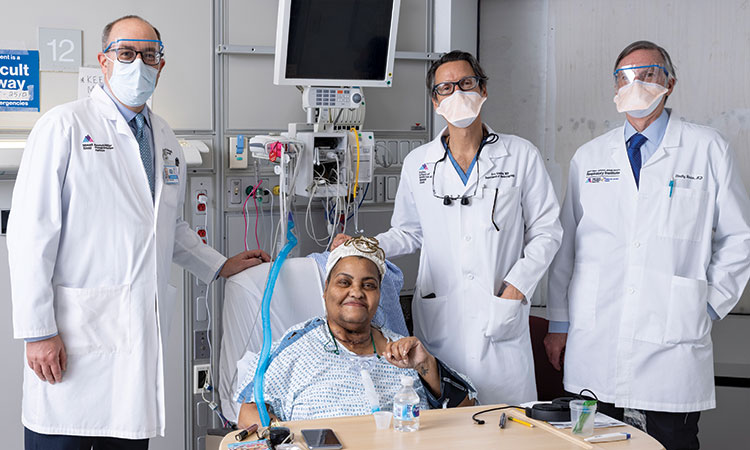
The Future of Tracheal Transplants
While the first in-human tracheal transplant was an unequivocal success, Dr. Genden realizes that it will take time before the procedure is widely performed.
“At this point, we’re not sure where it fits in. And we have to figure that out,” he says. “We do know that for right now, this is for the very ill: patients who have no other options and are otherwise relatively healthy.”
In the future, he foresees the procedure helping patients with many different conditions, including children with tracheal birth defects and patients with trachea-esophageal fistula deficits and other diseases. The procedure also holds promise for COVID-19 patients with damage to the trachea from intubation or the disease itself.
Otolaryngology Team Grows With New Physician
Sam Huh, MD, general otolaryngologist and Director of Otolaryngology at Mount Sinai Brooklyn, recently joined the team at Mount Sinai Doctors Manhasset. Dr. Huh’s interests include general otolaryngology and head and neck surgery.
“Being widely and broadly applied is critically important if the procedure is going to become an important option for patients who need this kind of work,” Dr. Genden says, noting that the surgery is something most microvascular surgeons can learn. “As it starts to work itself through the medical and surgical communities, time will tell, but it doesn’t require a lot more training or specific training. It just requires understanding the technique.”
Dr. Genden says one of the most important lessons he has learned is that it is sometimes necessary to challenge dogma in medicine.
“We’re trained to move ahead with what’s already been discovered, but taking a moment to step back and ask, ‘Is there a better way to do this?’ is really important,” he says. “I didn’t do this to pose a challenge or be disrespectful. It was simply scientific curiosity and asking the question. I think that’s healthy.”
To learn more, visit mountsinai.org/care/ent/services/tracheal-transplant/program.
Source: MD News August/September 2021, Lower Hudson/Bronx Edition
